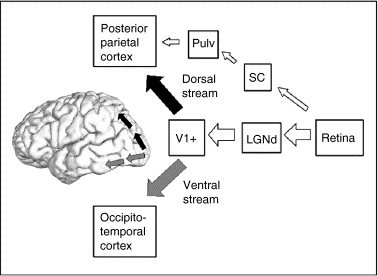Early visual processing
In this section you will study about how the visual system begins the processing of external stimuli. The section will familiarize you with measures of visual sensation by elaborating the basis of form perception, visual field representation, binocular fusion, visual acuity, and depth perception. A significant aspect is the regional differences in our visual perception: the central visual field is color-sensitive, has high acuity vision, functions at high levels of illumination while the periphery is more sensitive at low levels of illumination, is comparatively color insensitive, and has bad visual acuity. You will learn that the image is first projected onto a flattened sheet of photoreceptor cells which lie on the inner surface of the eye (i.e., retina). The information gathered by millions of receptor cells is projected later onto millions of bipolar cells that, in return, send projects to retinal ganglion cells. Such cells encode various aspects of the visual stimulus, and therefore carry parallel, self-sufficient, streams of information about stimulus color, size, and movement to the visual thalamus.

The situation of the visual system can be determined by investigating different aspects of visual sensation. For illustration, the ability to discover and recognize small objects (that is, visual acuity) can be affected by disorders in the transparent media of the eye and/or visual nervous system. The inability to detect objects in particular regions of space (that is, visual field defects) is frequently related to the neural damage.